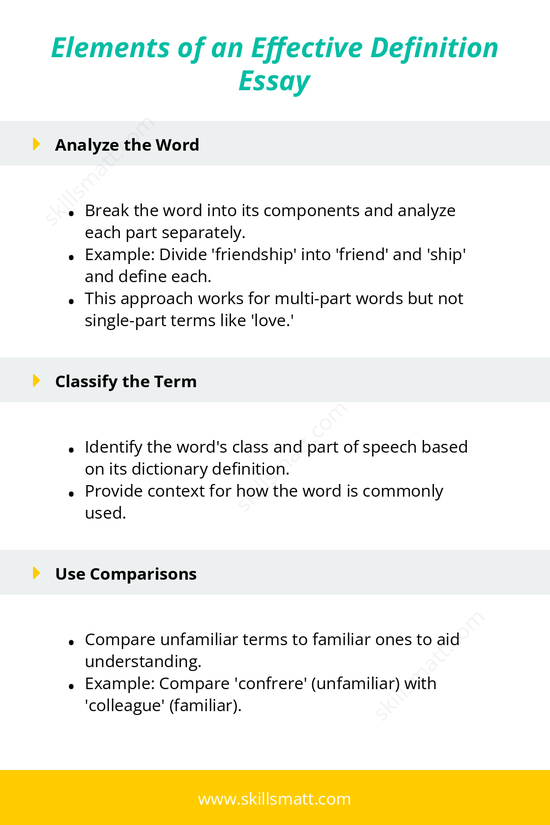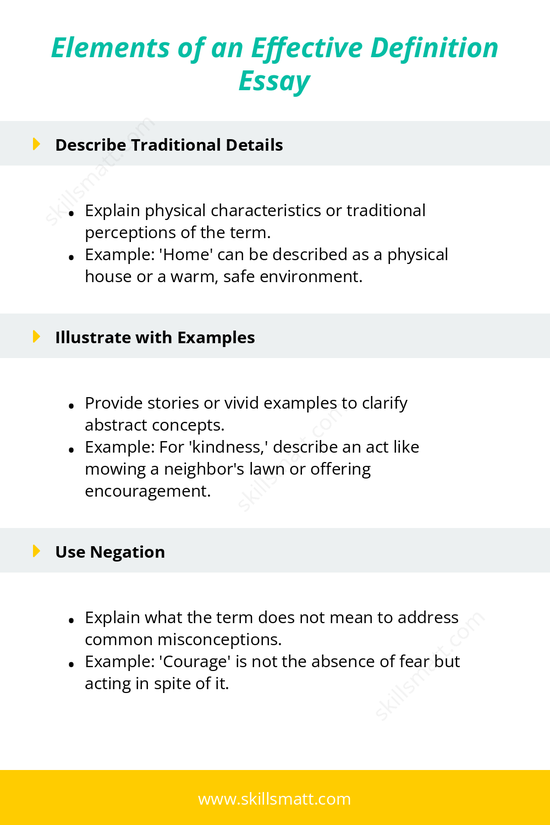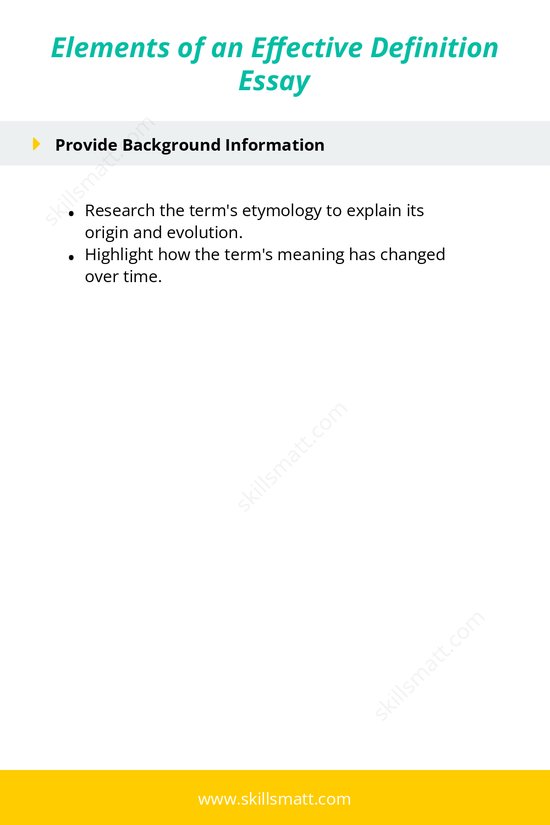Elements of an Effective Definition
Analyze the Word
- Break the word into its components and analyze each part separately.
- Example: Divide 'friendship' into 'friend' and 'ship' and define each.
- This approach works for multi-part words but not single-part terms like 'love.'
Classify the Term
- Identify the word's class and part of speech based on its dictionary definition.
- Provide context for how the word is commonly used.
Use Comparisons
- Compare unfamiliar terms to familiar ones to aid understanding.
- Example: Compare 'confrere' (unfamiliar) with 'colleague' (familiar).
Describe Traditional Details
- Explain physical characteristics or traditional perceptions of the term.
- Example: 'Home' can be described as a physical house or a warm, safe environment.
Illustrate with Examples
- Provide stories or vivid examples to clarify abstract concepts.
- Example: For 'kindness,' describe an act like mowing a neighbor's lawn or offering encouragement.
Use Negation
- Explain what the term does not mean to address common misconceptions.
- Example: 'Courage' is not the absence of fear but acting in spite of it.
Provide Background Information
- Research the term's etymology to explain its origin and evolution.
- Highlight how the term’s meaning has changed over time.



